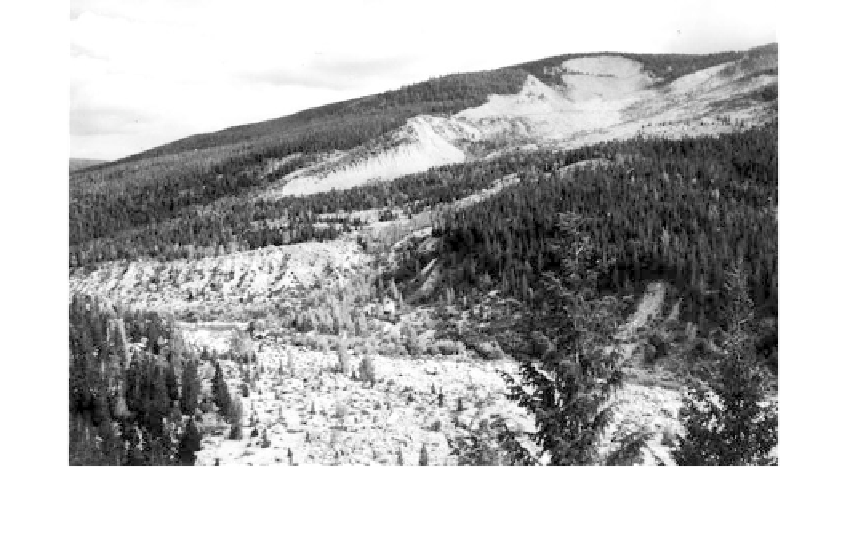Environmental Engineering Reference
In-Depth Information
FIGURE 9.17
The scar of the Gros Ventre slide as seen from the Gros Ventre River, Wyoming, in August 1977.
Recognition
Planar slides are characteristic of:
●
Bedded formations of sedimentary rocks dipping downslope at an inclination
similar to, or less than, the slope face. They result in block glides or massive rock
slides (see Examples below).
●
Faults, foliations, shears or joints forming long, continuous planes of weakness
that intersect the face of the slope.
●
Intersecting joints result in wedge failures, which can be very large in open-pit
mines.
●
Jointed hard rock results in block glides.
●
Exfoliation in granite masses results in slab glides.
Surface features:
●
Before total failure, tension cracks often form during slight initial displacement.
After total failure, blocks and slabs leave fresh scarps. Massive rockslides leave
a long fresh surface denuded of vegetation, varying in width from narrow to
wide and with a large debris mass at the toe of the slope and beyond. Since they
can achieve very high velocities, they can terminate far beyond the toe.
●
Examples of Major Failures
Goldau, Switzerland
In September 1806, a massive slab 1600 m long, 330 m wide, and 30 m thick broke loose
and slid downslope during a heavy rainstorm, destroying a village and killing 457 per-
sons. The slab consisted of Tertiary conglomerate with a calcareous binder resting on a 30°
slope. At its interface with the underlying rock was a porous layer of weathered rock.
Three possible causes were offered by Terzaghi (1950):
1.
The slope inclination gradually increased from tectonic movements.
2.
The shearing resistance at the slab interface gradually decreased because of pro-
gressive weathering or from removal of cementing material.


